Indeed, solar panels have a long lifespan. They have the ability to resist the majority of storms. In most cases, not even hail can break your solar panels.However, panels may be damaged beyond repair during particularly intense hailstorms.When it comes to protecting their homes over the long run, many people are most worried about hail storms. This is because solar panels on roofs get hit right in the middle when it rains. When you think about hearing hail hit solar panels, you might flinch.
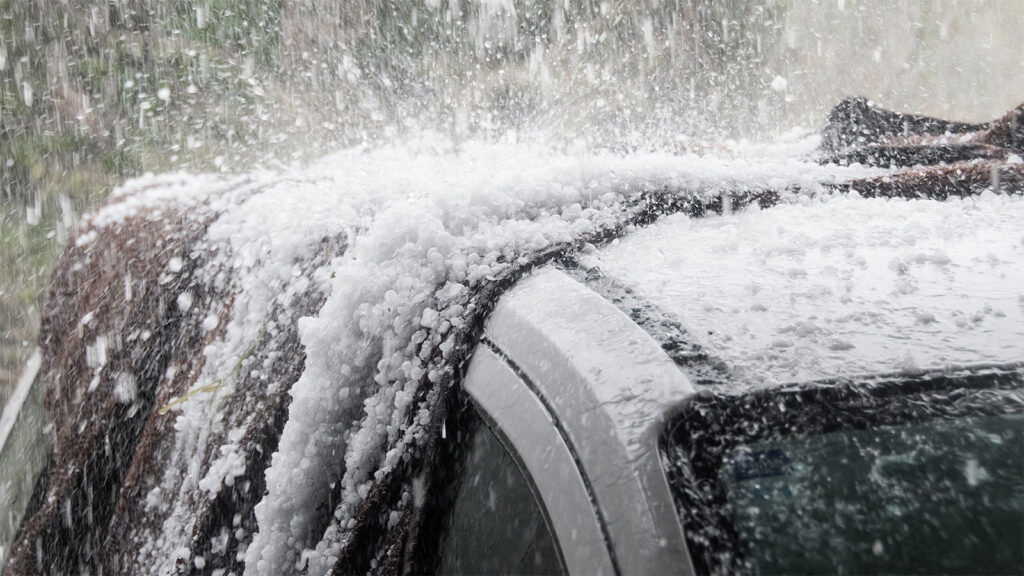
Chances of hail damage to solar panels
Thankfully, heavy hailstorms are rare across the country, and most solar panels are sturdy enough to resist light to moderate impact. The probability of hail breaking solar panels is less than 5%, according to research conducted by the National Renewable Energy Laboratory (NREL). Damage to solar panels from hail is unlikely, but not impossible.
In US:
People in states like Texas, Colorado, and Nebraska, which have annual hailstorms, would benefit from knowing how solar panels fare under such conditions.
In Europe:
Hailstorms, and the damage they wreak, are becoming more common and costly across Europe and the Netherlands. Recent hail storms in northern Italy have highlighted the vulnerability of solar installations to abrupt, extreme weather. In order to demonstrate the severity of the storms and, more importantly, the size of the hailstones, which in some cases reached 20 cm in diameter.
In Canada:
However, when tennis ball and baseball-sized hail pounded the community of Cardston in southern Alberta, we found out that solar panels are not foolproof. One solar photovoltaic (PV) installation in Cardston had damaged panels during the storm. Still, the hail destroyed or severely damaged nearly everything in Cardston. In fact, it was said that half of the autos at the local dealership were total losses.
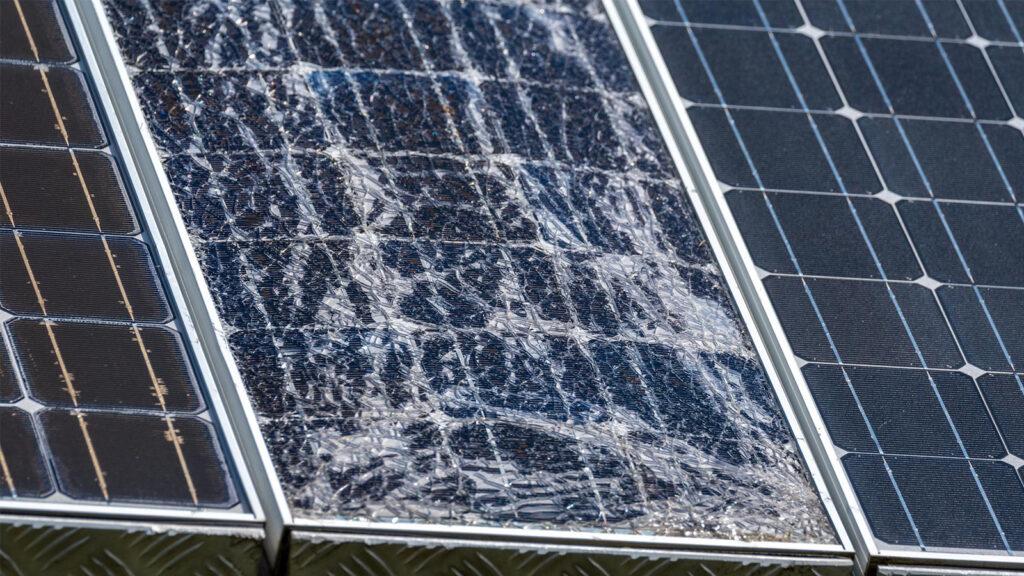
Important factors in the impact of hail damage on solar panels
1. The Speed of Hail
The speed at which hailstones can move is a cause for serious concern. Hail can move anywhere from 10 to 75 miles per hour. Large hailstones can do greater harm to solar panels since they travel at higher speeds.
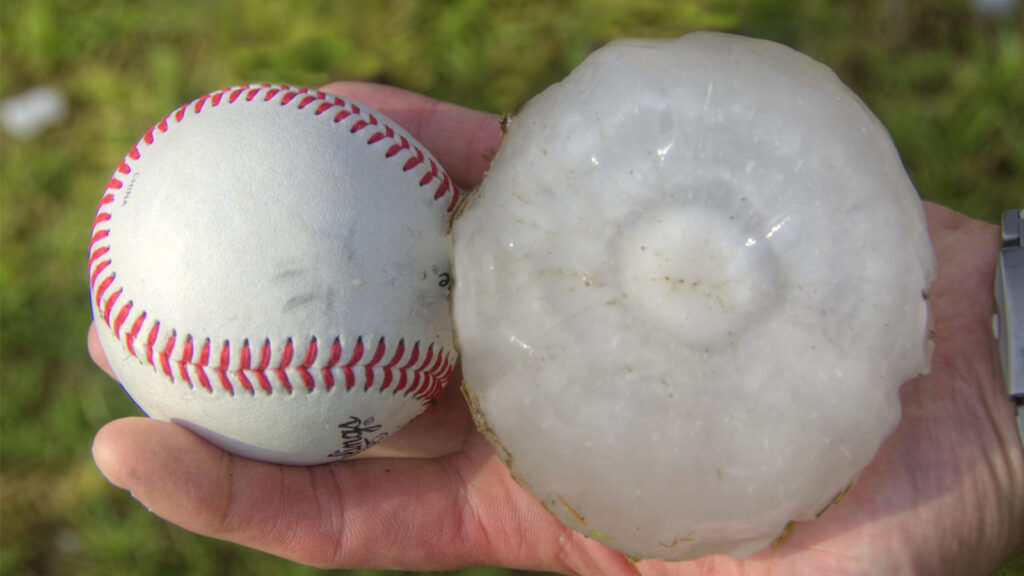
2. Size of the Hailstones
Researchers in the Netherlands found that hail with a diameter of more than 3 centimeters is the most damaging to solar cells. At 3 cm, damage can be both obvious and invisible, but at 4 cm, the amount of visible damage goes up by a lot.The average amount of damage that bigger hailstones (greater than 4 cm) do to solar panels is more than what smaller hailstones do, but the amount of damage that larger hailstones do can vary more.
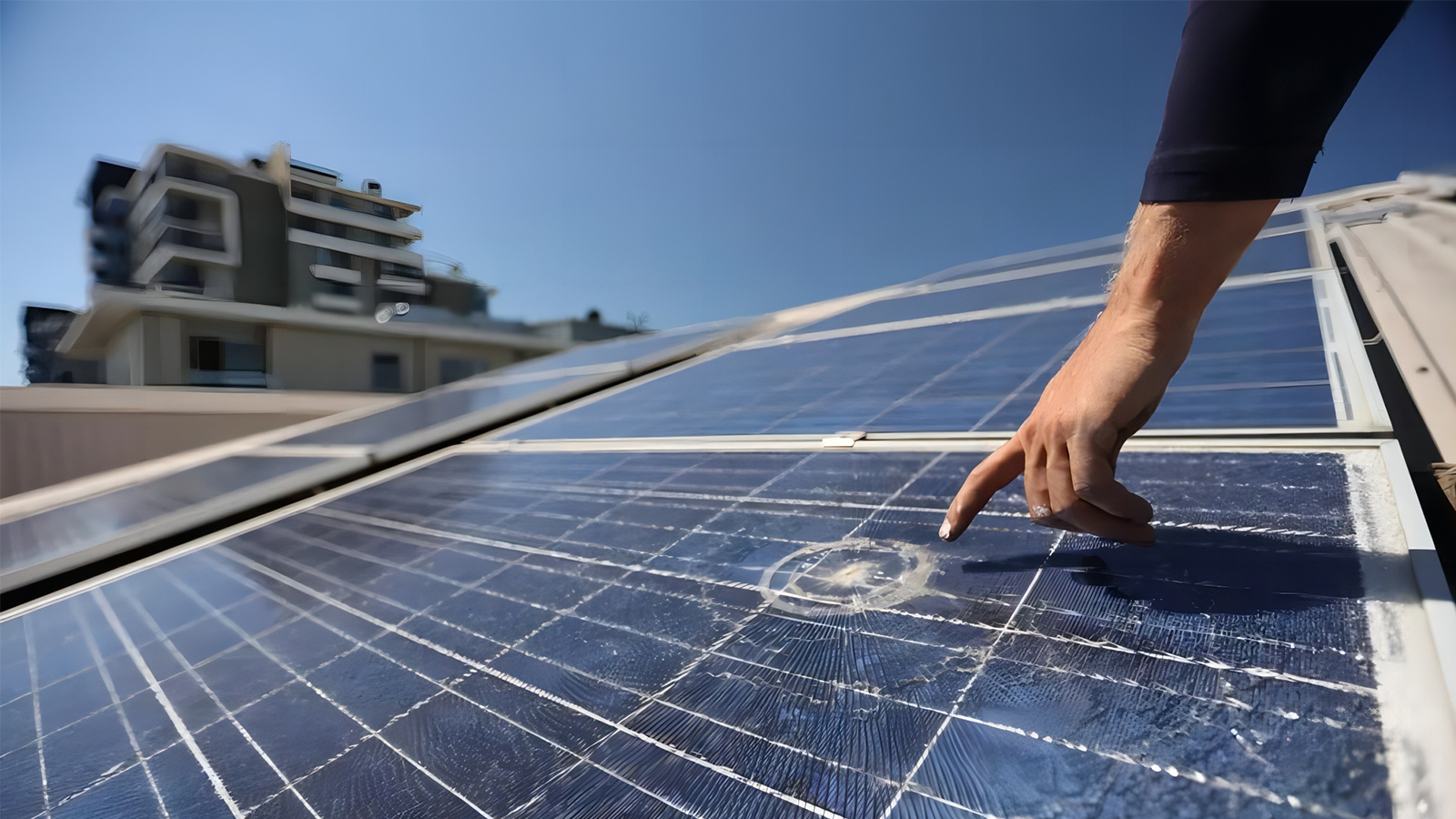
3.The Orientation of the Roof in Relation to the Direction of the Hail
The researchers noted that the size of the hailstones might not be as important as the orientation of the roof in relation to the direction of the hail, which might have a significant impact on the hail damage to solar panels.
There are certain evidence that suggest the inclination of solar panels, as denoted by low angles on flat roofs and higher angles on pitched roofs, may influence the extent of damage sustained by those panels. Specifically, it is observed that solar panels positioned at low angles tend to experience a greater degree of damage.
During the hailstorms in Cardston, the solar panels were installed in a horizontal orientation by the homeowner, without any inclination towards the southern direction. If the orientation of the objects had been inclined towards the South, it is probable that they would have been able to withstand the impact of hail coming from the Northwest without being directly affected. ·
How Badly Do Solar Panels Get Damaged by Hail?
When it comes to severe hailstorms, solar panels may become chipped, cracked, or even break open.
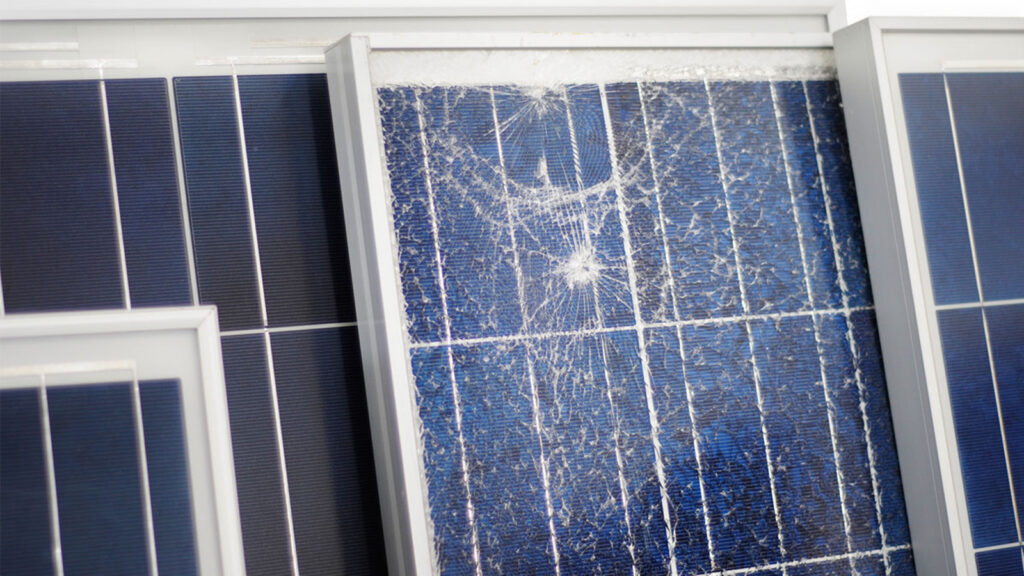
1. Internal Cracks will shorten life of solar panels
Damage to the module’s solar cells and other interior components is possible even if the outside shows no signs of cracking following a hailstorm. Microcracks, which are much smaller than a human hair, occur not in the front glass layer but in the silicon, therefore there is no loss of initial yield. However, the damaged areas may indicate a quick decline in power after a few months, and the micro-cracks also become visible on the outside of the panel after roughly a year. Any wear and tear on a solar panel shortens its useful life.
2. Surface cracks will slow down solar panels’ output
If a hailstorm causes surface cracks on solar modules, it will affect the efficiency of solar panels. Solar panels that have been cracked on the outside but still function should be repaired. These irregularities, however, can reduce solar output. If hail destroys 15% of the cells within the panels, the device will generate 15% less peak voltage. Taking a voltage reading from the damaged panel is a simple way to check.
3. External cracks will cause moisture and generate hot spots
Panels with cracks in them are more likely to malfunction or break before their time because water, moisture, or debris might become trapped inside them. There is a risk of fire or other irreparable harm to internal components if a fractured surface creates hot spots.
But not all visible flaws have the same impact on efficiency. The damage may be superficial or only visible upon closer inspection.
What Kind of Solar Panels Are Able to Withstand a Hailstorm?
1. High Quality Glass-Glass Solar Panels
A high-quality solar panel will have a thick coating of tempered glass protecting its sensitive components from damage. Tempered glass has a long lifespan in outdoor settings because it is very impact-resistant and can survive moderate hail.
If you want your panel to be able to resist the severe hailstorms, you should surely go with a glass-glass panel rather than a glass-foil panel.
2. Solar panels with IEC61215ratings
The worldwide IEC 61215 certificate holds paramount significance. The panels possessing this certification exhibit the ability to endure the impact of hail of 25 mm in diameter, descending at a velocity of 23 m/s. This level of resilience aligns with hail resistance class 2, as per the prevalent 5-point system predominantly employed in Western nations.
3. Solar panels with IP68 rating
The IP68 certification is another standard that all rigid solar panels should meet. The panel’s IP68 rating guarantees it is protected from dust and water. Panels certified for all hazards posed by hail are ideal, as hail can cause secondary damage by shattering the panels and allowing in leaks.
All Maysun Solar products are with IP68&IEC61215 ratings and certified.
Our top-selling product TwiSun 410W Glass-Glass Black Frame Solar Panel with unmatched performance and durability is highly recommend to withstand the hails.
Since 2008, Maysun Solar has focused on creating premium solar panels. Choose from our extensive selection of solar panels that use half-cut, MBB, IBC, and Shingled technologies in full black, black frame, silver, and glass-glass finishes. These panels provide exceptional performance and fashionable designs that easily fit into any building. In several nations, Maysun Solar has developed offices, warehouses, and enduring partnerships with top installers. Maysun has cooperative installation experts in various European countries. If you have any questions about PV or would want the most recent module quotes, please contact us. If you need photovoltaic system installation consultation, you can also contact Maysun for help. We are eager to help you.
Resource:
Cheng, M. (2023). What you need to know about solar power hail damage. Solar Reviews.
Ecoflow. (2023). 8 Ways To Protect Your Solar Panels from Hail Storm Damage. EcoFlow US Blog. Matalucci, S. (2023, July 26). How big must hailstones be to damage PV systems? Pv Magazine International.
Sauer, G. (2021). Hail vs. Solar Panels. SkyFire Energy.
Cheng, M. (2023). What you need to know about solar power hail damage. Solar Reviews.
Ecoflow. (2023). 8 Ways To Protect Your Solar Panels from Hail Storm Damage. EcoFlow US Blog. Matalucci, S. (2023, July 26). How big must hailstones be to damage PV systems? Pv Magazine International.
Sauer, G. (2021). Hail vs. Solar Panels. SkyFire Energy.

New Photovoltaic news you should know about (March 2024)
Table of Contents REC Unveils a 430 W Heterojunction Solar Module Boasting 22.2% Efficiency REC, a Singapore-based PV module manufacturer, introduces its residential solar modules featuring Alpha heterojunction cell technology. Production has commenced at REC’s Industry 4.0 fab in Singapore, with initial shipments

IBC Solar Modules vs. Bifacial Glass-Glass Solar Modules: Which Is More Suitable for Winter or Low-Light Conditions?
Table of Contents Introduction As the demand for renewable energy continues to surge, advancements in solar technology have broadened the spectrum of component choices available to us. Among these, IBC (Interdigitated Back Contact) full black solar modules have garnered special attention due to

Why Are Lightweight Bifacial Solar Panels the Best Choice for Balcony Solar Power Plants?
Table of Contents In the quest for efficient and eco-friendly home energy solutions, solar photovoltaic technology has emerged as a key player due to its sustainability and clean energy benefits. Particularly in the space-constrained urban settings, the effective conversion of every inch of

Questions You Might Ask About Balcony Solar Power Plants in 2024
Table of Contents What is a Balcony Solar Power Plant? Similar to a traditional photovoltaic panel, a Balcony Solar Power Plant is a device designed to generate electricity from solar energy. This green energy generator is specifically tailored for self-consumption, but it comes with

A Step-by-Step DTU Guide for Balcony Solar Power Plants
As renewable energy becomes increasingly integral in our daily lives, Maysun Solar’s Balcony Solar Power Station, with its advanced technology and user-friendly design, represents a transformative approach to home solar solutions. The integration of a Data Transfer Unit (DTU) enhances its smart functionality

What Are The Main Components of Solar Panels?
What are the main components of solar panel? Solar panels, the cornerstone of solar energy technology, are composed of several integral parts, each contributing to their ability to harness sunlight and convert it into electrical energy. In this article, we will explore the essential

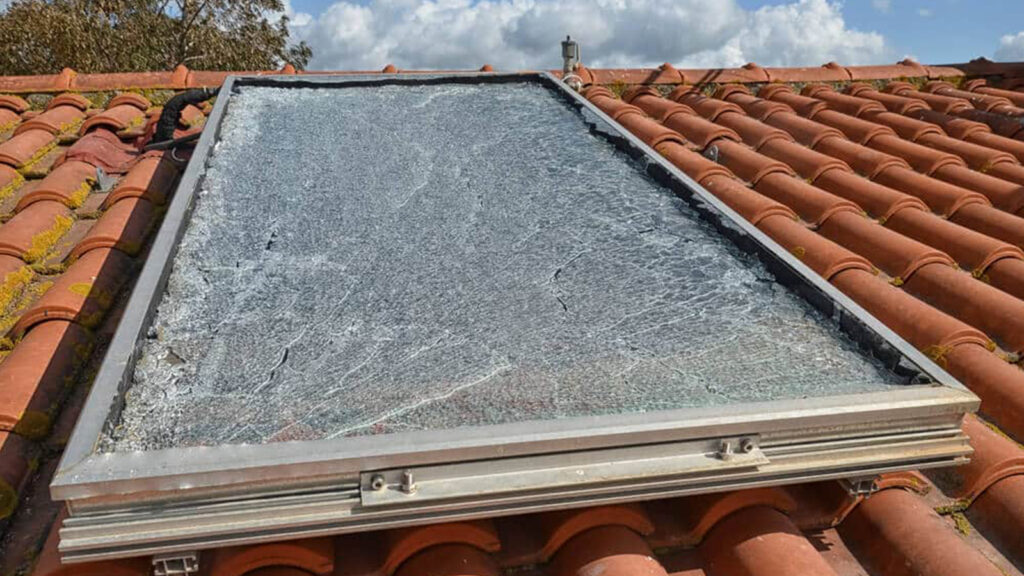
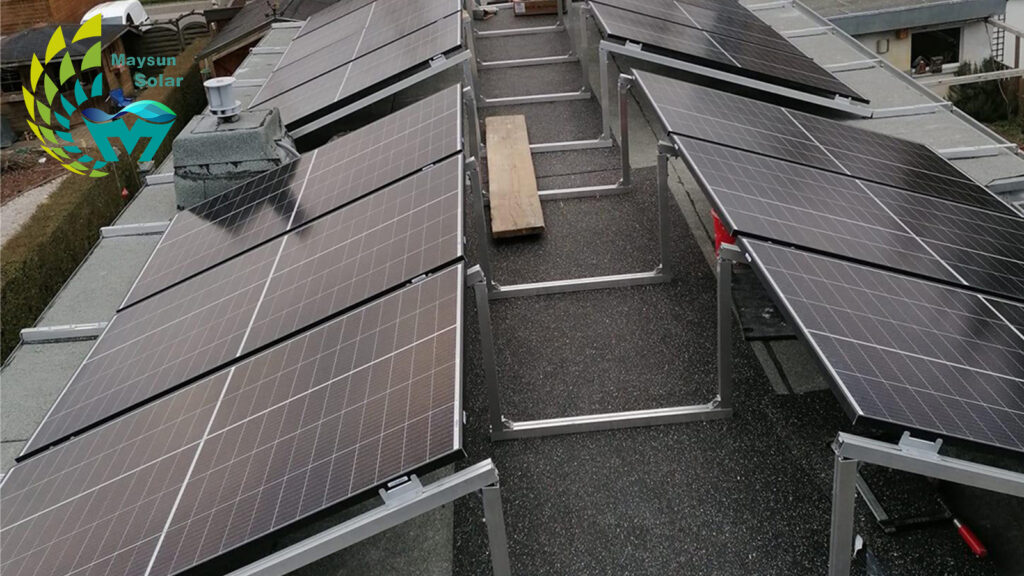
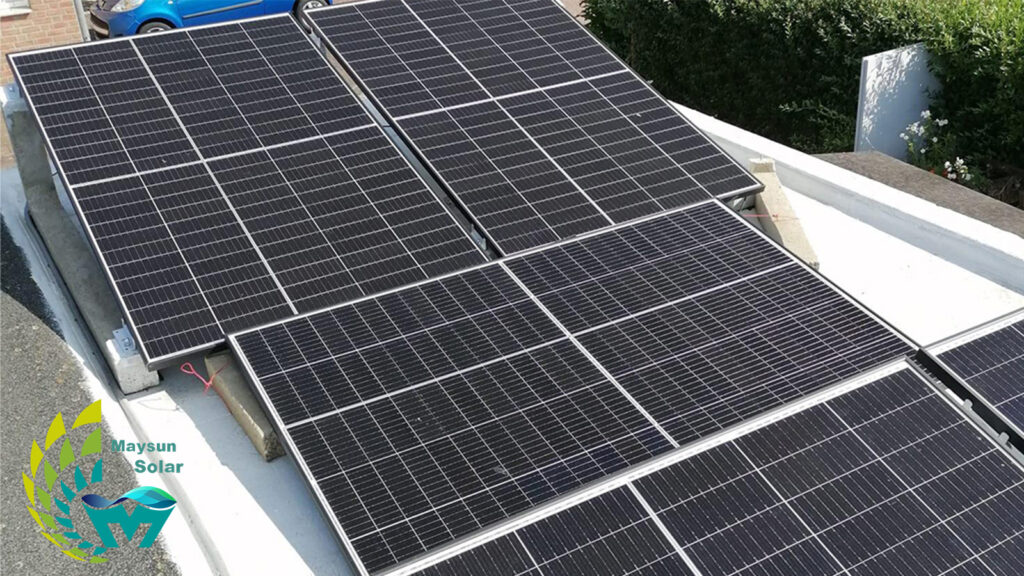
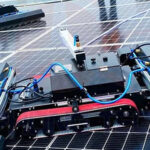
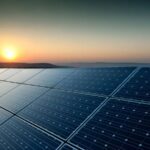
Pingback: Solar Tech Transformed: Transparent Backsheets - Professional Distributed PV Module Manufacturer